We may receive a commission if you make purchases through affiliate links (at no extra cost to you). Read why our approach to travel is different.
Taiwan is situated at the intersection of tectonic plates, making it not just a hotspot for earthquakes, but also blessed with hot springs.
Most hot springs in Taiwan are discovered by Indigenous peoples. When Japanese colonizers came, they laid the groundwork of building hot springs commercially, turning these hot springs into vibrant spots filled with hotels and inns. That’s why you’ll notice that many hot spring destinations are rich in Japanese cultural elements, making you feel like you’ve stepped into Japan!
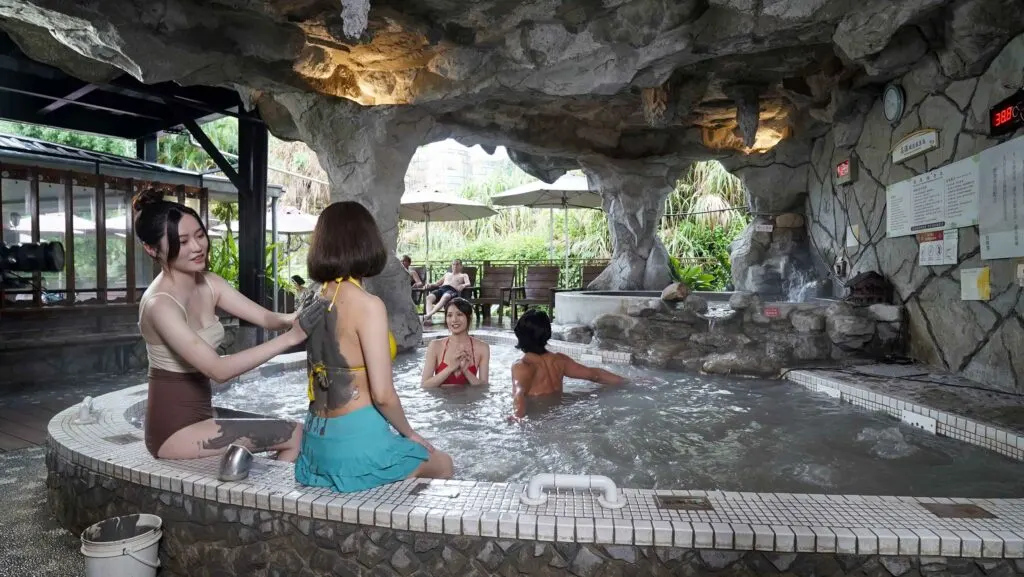
No matter which region in Taiwan you’re in, there’s a variety of options for you to surrender your body into the warm embrace of hot springs. The best time to go for hot springs is during the coldest months. If you’re visiting Taipei, which is close to some of the best hot spring spots in Taiwan, then December to March are the best months.
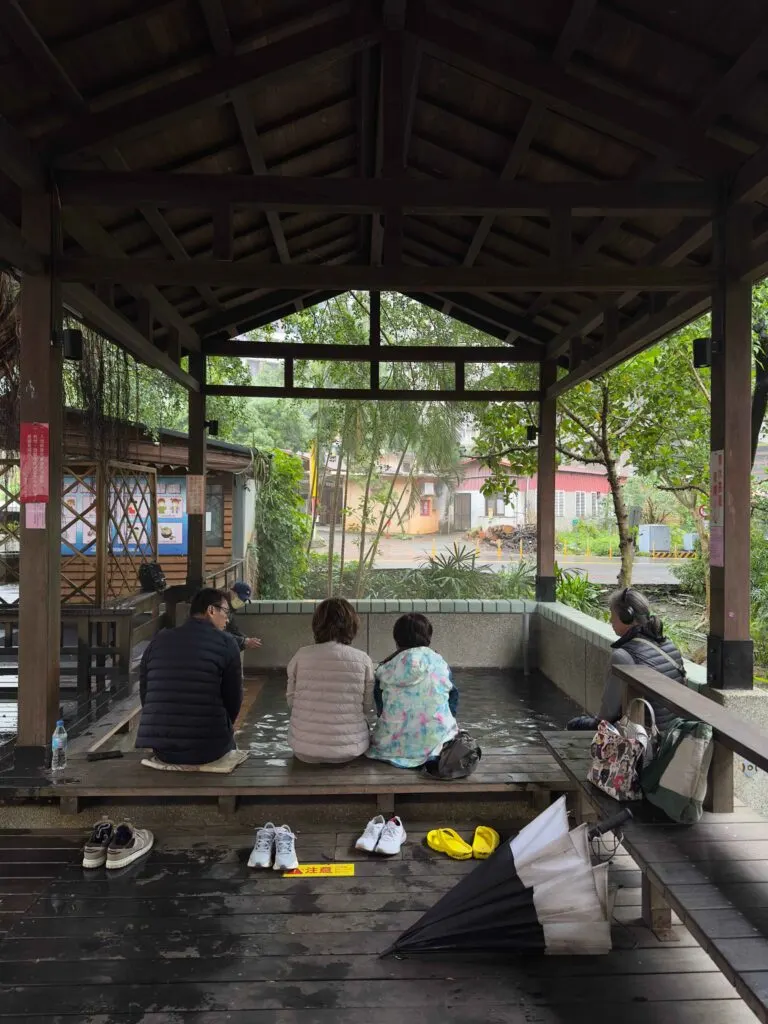
When choosing the perfect hot spring pool, it helps to narrow down your options by considering three key factors: the size of your group (solo traveler, couple, or family), your preferred setting (public mixed-gender pools, private hot spring in hotel, gender-segregated baths, natural creek hot springs), and your budget (luxury indulgence, budget-friendly, or even free).
We won’t go into every scenarios, since most of the locations have a variety of pools that’ll cater to your preference. Instead, we’ll guide you through the top destinations that allow you to have unique hot spring experiences in Taiwan from the north to the south. Let’s soak in!
Skip to...
1. Beitou Hot Springs (Taipei City)
Beitou is the top destination for hot spring experience in Northern Taiwan that everyone talks about when it comes to hot springs. Why? First, it’s the only hot spring close by the metro in Taiwan. Second, it is where Taiwan’s first hot spring hotel is built in 1896. That means you’re not only soaking in warm, therapeutic waters but also exploring local history by just wandering around.

Oh, and did I mention the springs themselves are one-of-a-kind?
Beitou includes three unique hot spring types that you can choose from. There’s the rare emerald-green Green Sulfur Springs (only could be found here and in Tamagawa, Japan), the creamy, milky-white White Sulfur Springs (so called “Milk Bath”), and the clear Iron Sulfur Springs, famous for its therapeutic properties. However, sulfur comes with the unique odor that you’ll need to endure here.
With more than 20 hot spring bath houses and hotels, you can choose from luxurious resorts (i.e., Spring City Resort) that offer diverse spa pools, or more budget-friendly bathhouses that’s mostly located around Beitou Market. And when you’re done soaking, go wander the area of Beitou for a more in-depth experience.
Must-visit nearby attractions
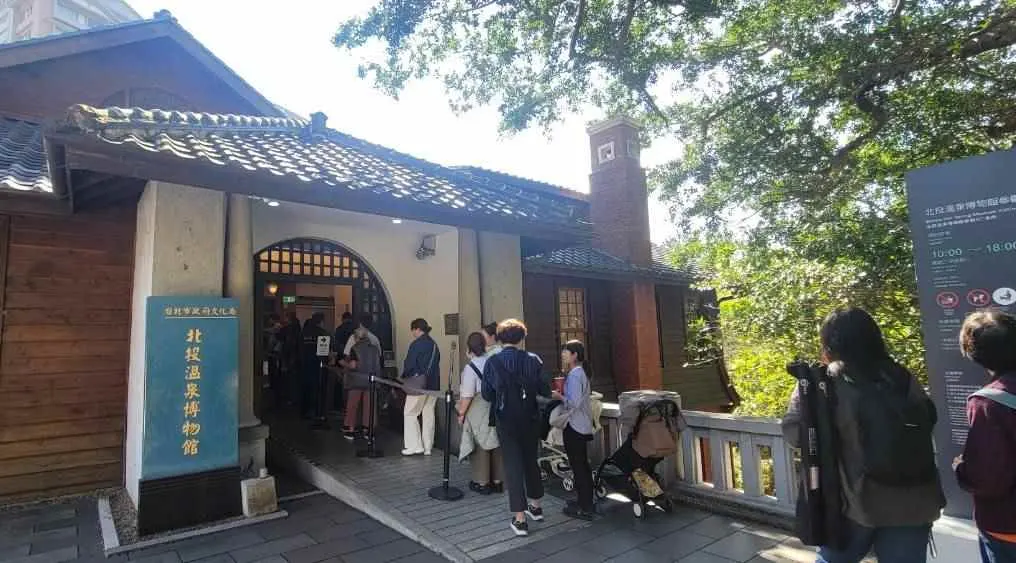
Beitou Hot Spring Museum
Originally a public hot spring bath during the Japanese colonial era, this is now a free museum for you to dive into the history of Beitou. Just a reminder, you’ll need to take off your shoes and switch to the provided slippers before going in.
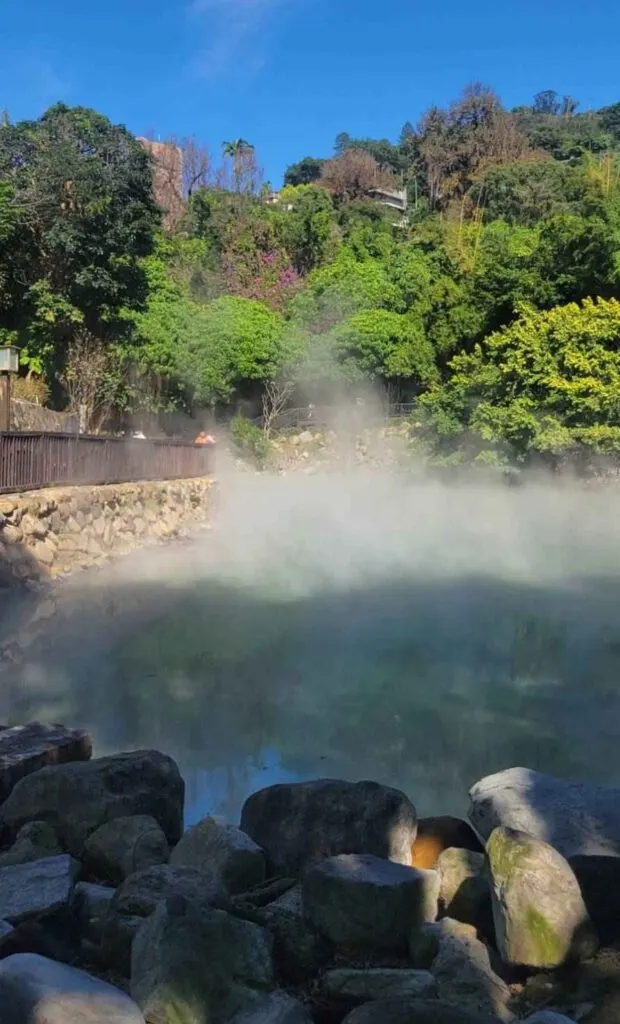
Thermal Valley Trail:
A beautiful place to stroll around the lake after visiting the museum. It looks like a fantasy world with its rising steam from the green sulfur spring, which will greet you with a sulfur smell that’s worth enduring for the view. During the walk, you could experience dipping your hand in the mini fountain at the entrance to feel the sulphury water, and sit on the hot stone at the entrance.
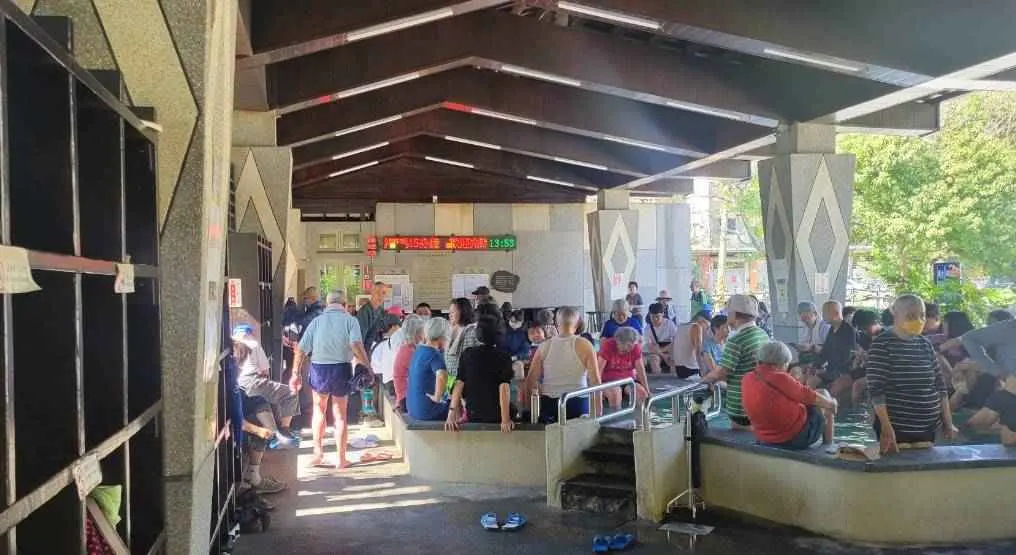
Free feet-soaking public pools:
Fuxing Park and Sulfur Springs Valley are the two destinations (originally, Quanyuan Park was the third, but it closed following an earthquake). These parks are very popular among local elders. Fuxing Park offers the green sulfur spring, while Sulfur Springs Valley features milky white sulfur. For the most convenient experience, Fuxing Park is just a short walk from Xinbeitou metro station. But why not soak in both? Start with Fuxing Park, then head to Sulfur Springs Valley for a natural trail. Don’t forget to bring slippers, a towel, and shorts recommended to not get drenched! The parks close at 6 PM, so plan your visit accordingly.
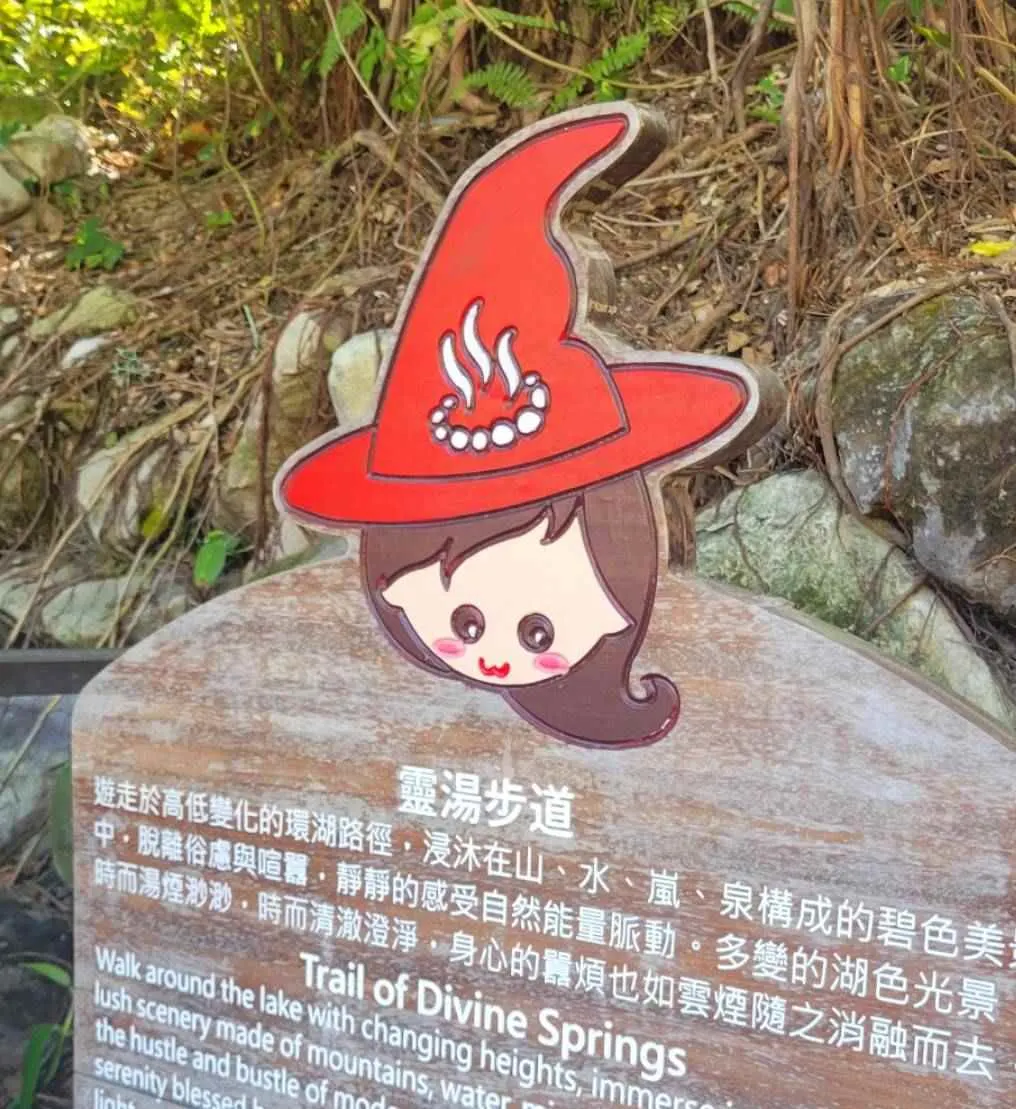
Fun fact: Wondering why the mascot looks like a witch? It’s because Beitou’s name comes from the indigenous term “Patau,” which means “the place of the witches” because the steams from the springs looks like the magic from the witches. Pretty cool, right? Taiwanese hot springs aren’t just about Japanese influences, they’re also rich with indigenous history.
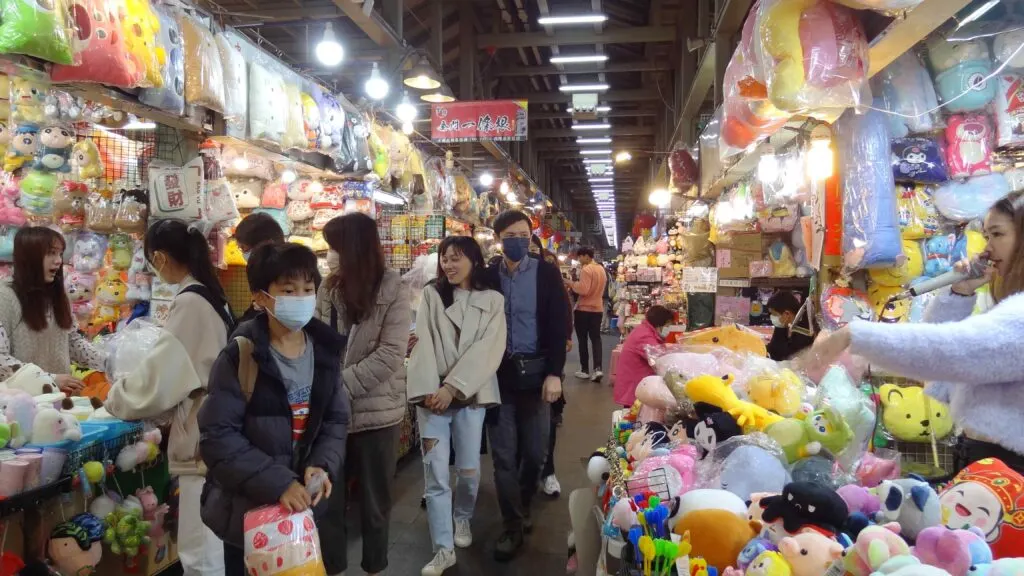
Shilin Night Market:
At the end of the day, you could take the metro to Jiantan station and stroll around the famous Shilin night market with local street foods to fill your stomach! Check out our article to discover where to find the best food in this night market.
2. Wulai Hot Springs (New Taipei City)
Atayal indigenous culture, mountain scenery, and hot springs are the three main features of Wulai. Wulai is one of the favorite getaway spots for Taipei locals seeking a break from the bustling city.
You could get to Wulai by stopping at the MRT Xindian Station and taking a 40-minute bus ride there.
Legend has it that when the Atayal tribe first discovered the hot steam rising from the springs, they exclaimed “Ulai!”, meaning “hot spring”, which became this region’s name until this day.
If you’re looking for a hot spring experience without the sulfur odors or colors, Wulai’s sodium bicarbonate springs, aka the “beauty springs”, that have moisturizing effects on skin are the perfect place to go.
Must-visit nearby attractions
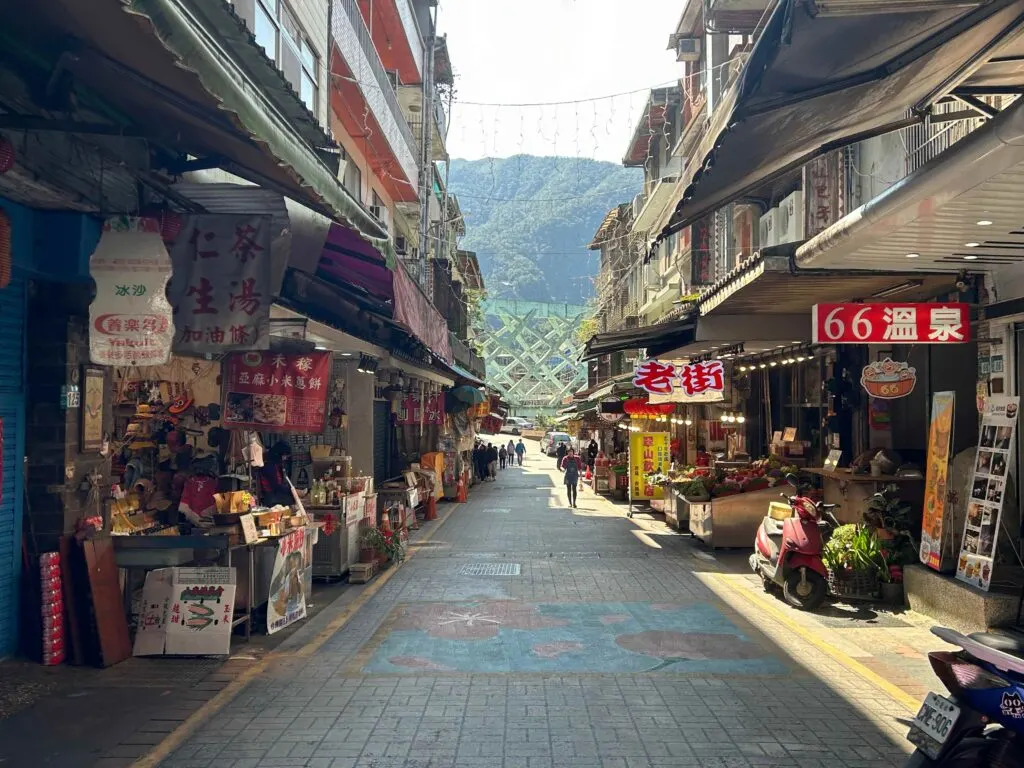
Wulai Old Street:
Great place for a stroll to find a variety of food and drinks that are rich with Atayal indigenous tribal culture. Grab some wild boar meat, rice cooked in bamboo, and hot spring eggs!

Wulai Atayal Museum:
A free entry museum that allows you to learn more about Atayal Indigenous culture and history. However, not much English translation is provided, but you can always translate it through Google Translate’s lens.
(Source: Wulai Atayal Museum)
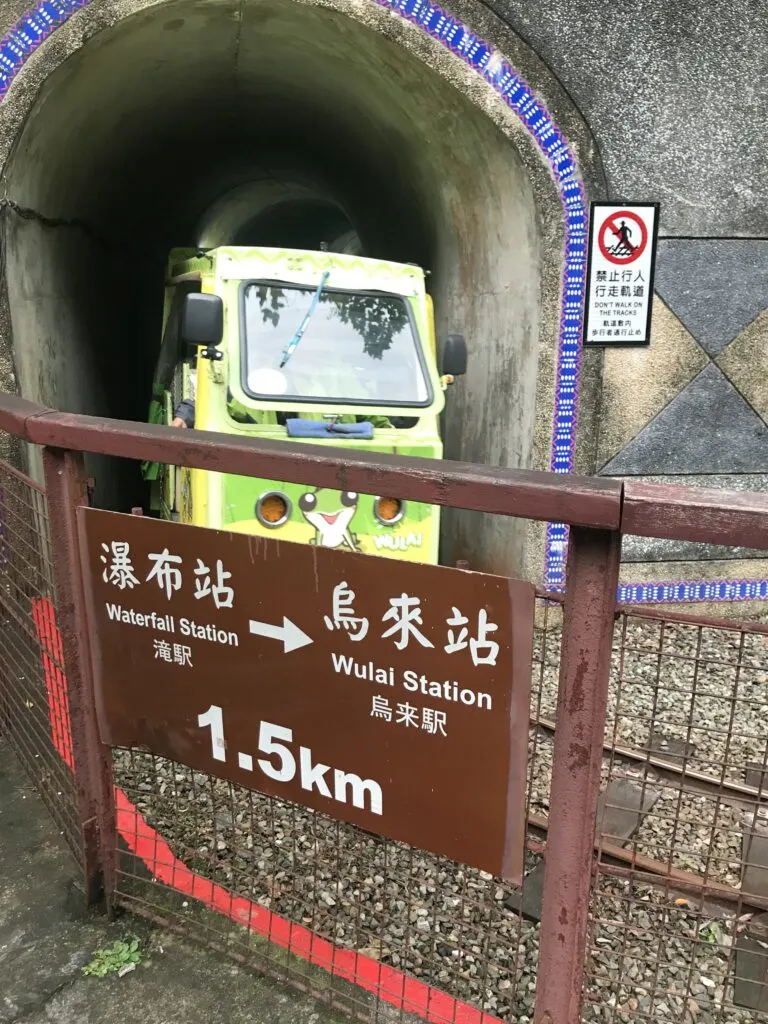
Wulai Log Cart:
Originally used for transporting tools for lumbering, it is now a cute mini train for tourists to sightsee the nice view of the area. With just NT$50, you will save the energy to walk up to the waterfall attraction and add a sense of cutesy fun on the trip.
(Credit: Bailey)
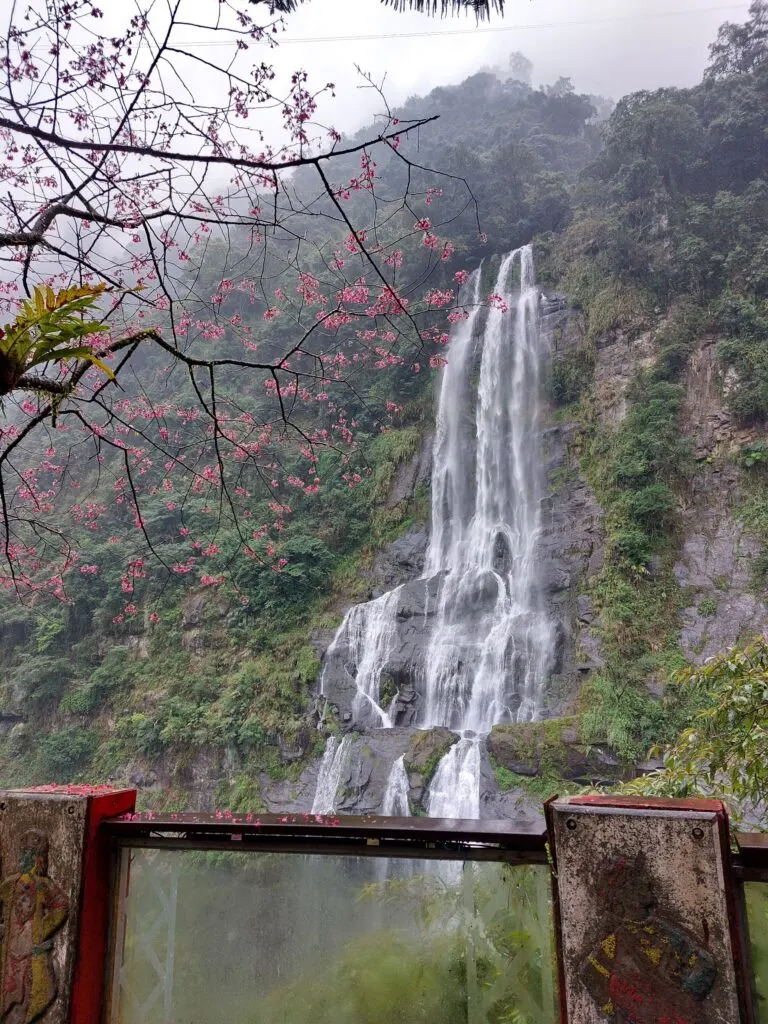
Wulai Waterfall:
At 80 metres high, this waterfall is the highest waterfall in northern Taiwan. It’s also a good area to see cherry blossoms from late January to February. You can sip coffee from a cafe called “Wulai Three Cafe” that offers a nice spot to view the waterfall, though note that this cafe would require each customer to buy at least one drink within the time limit. Or just simply take in the beautiful waterfall from the observation deck.
(Credit: Paggy)
3. Jiaoxi Hot Springs (Yilan County)
Within just an hour of a bus ride from Taipei, Jiaoxi is a township in Yilan for locals who prefer a less mountainous location compared to Wulai. It is one of the few hot spring areas that’s located in the lowlands instead of having to drive the mountain roads.
The hot spring in this area was originally called “Tangwei,” meaning “surrounding the spring,” after its discovery. That’s why you’ll notice some places here still carry this name.
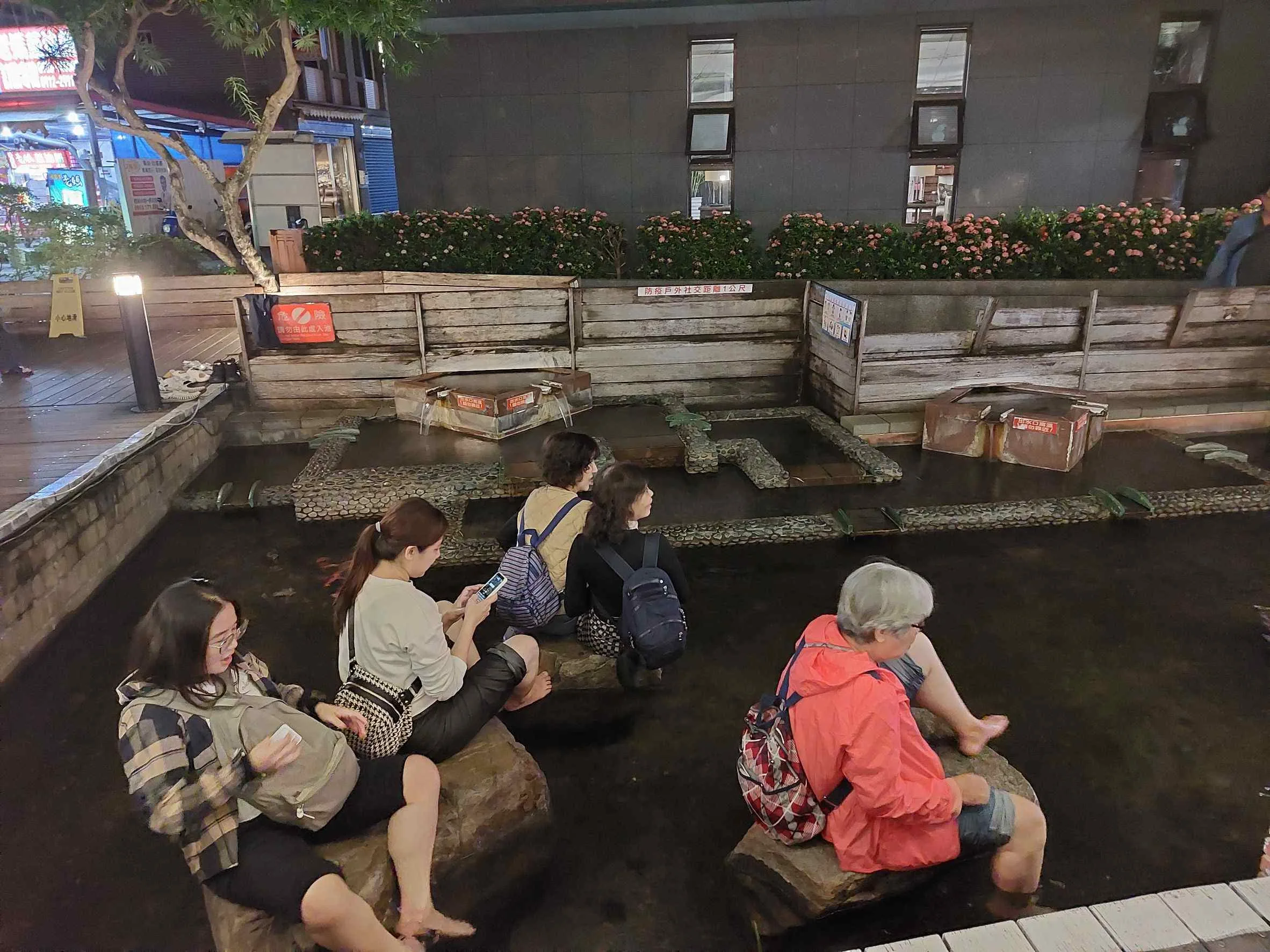
Jiaoxi’s hot spring culture transformed over the decades, from its hotel era to a vibrant blend of music, alcohol, and hot springs during Taiwan’s economic boom which gave Jiaoxi the name of “The Tender Land” due to the peak of the adult industries here in the 80s. After stricter policies and trends, it has shifted toward a leisure-focused touristic area.
The spring type here is sodium bicarbonate spring, like that of Wulai, which is clear, odorless and the minerals leave your skin smooth and fine. The local farmers even used hot spring water to develop their own hot spring vegetables for agriculture.
Must-visit nearby attractions
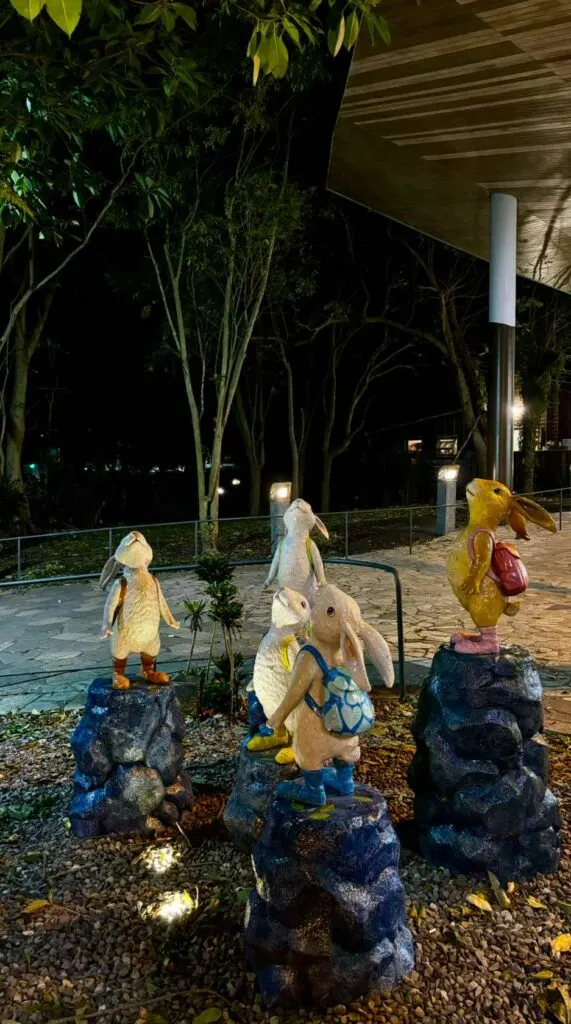
Free foot-soaking pool & Fish foot spa:
What I love about Jiaoxi are the two hot spring parks here: “Jiaoxi Hot Spring Park” and “Tangweiguo Hot Spring Park”.
Jiaoxi Park has some cute hot spring installation art designs from Jimmy Liao, a famous Taiwanese illustrator known for its heart-warming artwork that’ll leave you with a smile. And also a free foot-soaking pool.
Tangweiguo Hot Spring Park also has a free foot-soaking pool, but it even has a fish foot spa that allows the fish to nibble your dead skin away for just NT$80. These two parks have numerous street food in the surrounding, making it perfect for a nice stroll. Don’t miss out on Yilan’s specialty: green onion cakes.
(Credit: Chia-Yu Chang)

Shanghaoji Yilan Souvenir Shop (尚好記):
Famous for its hot spring-related veggies, this is a must-visit place to buy food souvenirs like hot spring tomato juice.
(Source: Jiaoxi Tourism Official Website)

Wufengqi Waterfall:
An easy hike could lead you to this famous natural attraction in Jiaoxi. It features three waterfalls that become more impressive than another as you hike up. Unfortunately, due to damage from a typhoon in 2024, the trail is currently closed for reconstruction until 2025/09/30. Falling rocks often lead to trail being closed, so be sure to check online or Google Maps reviews for the latest updates before your visit.
4. Guguan Hot Springs (Taichung City)
In the mountainous region of Taichung, Guguan Hot Springs are perfect for soaking your tired muscles after hiking the nearby scenic trails at the altitude of around 800 meters. Remember to prepare a good pair of shoes for hiking if you’re planning to walk the trail!
The springs here were once known as Meiji Hot Springs due to their development during the Meiji period of Japanese colonization era. Guguan has suffered from the 921 earthquake and several floods from typhoons in the past, but after reconstruction, it still stands as one of the top destinations for hot springs today.
Must-visit nearby attractions
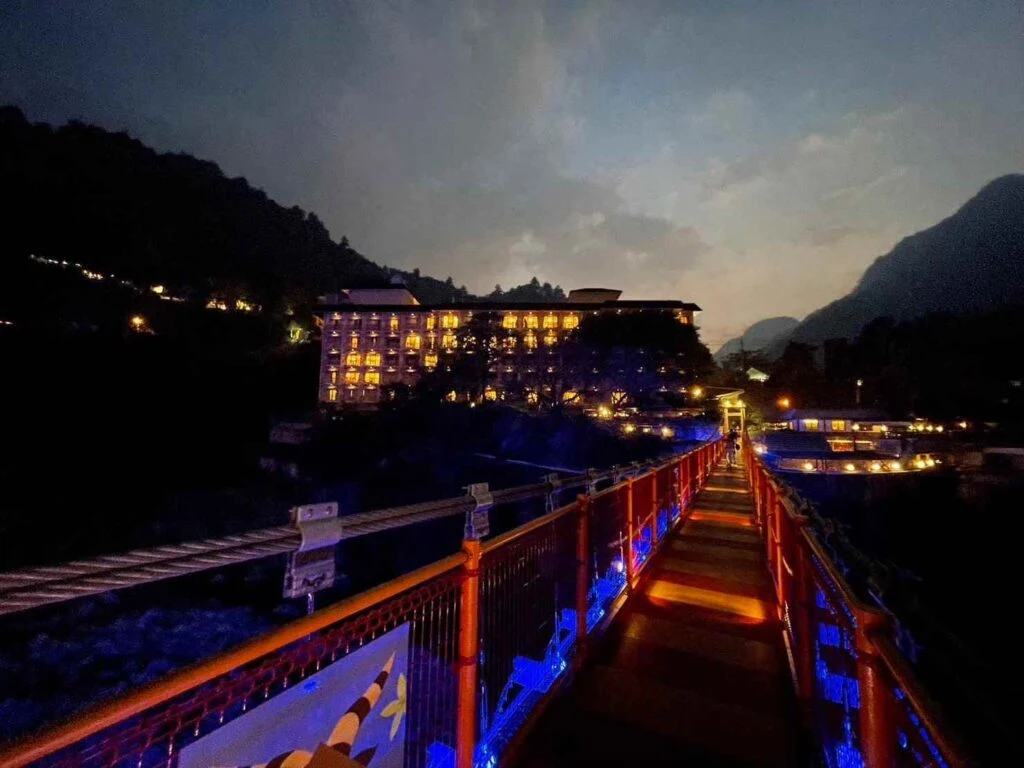
Guguan Suspension Bridge:
From the Guguan park, you could walk across the Guguan Suspension that gives a great view of the Dajia River. This bridge leads to the Mingzhi Wenquan Old Street on the other side. An evening walk is very recommended if you’re staying here overnight, as the lights make the bridge more captivating.
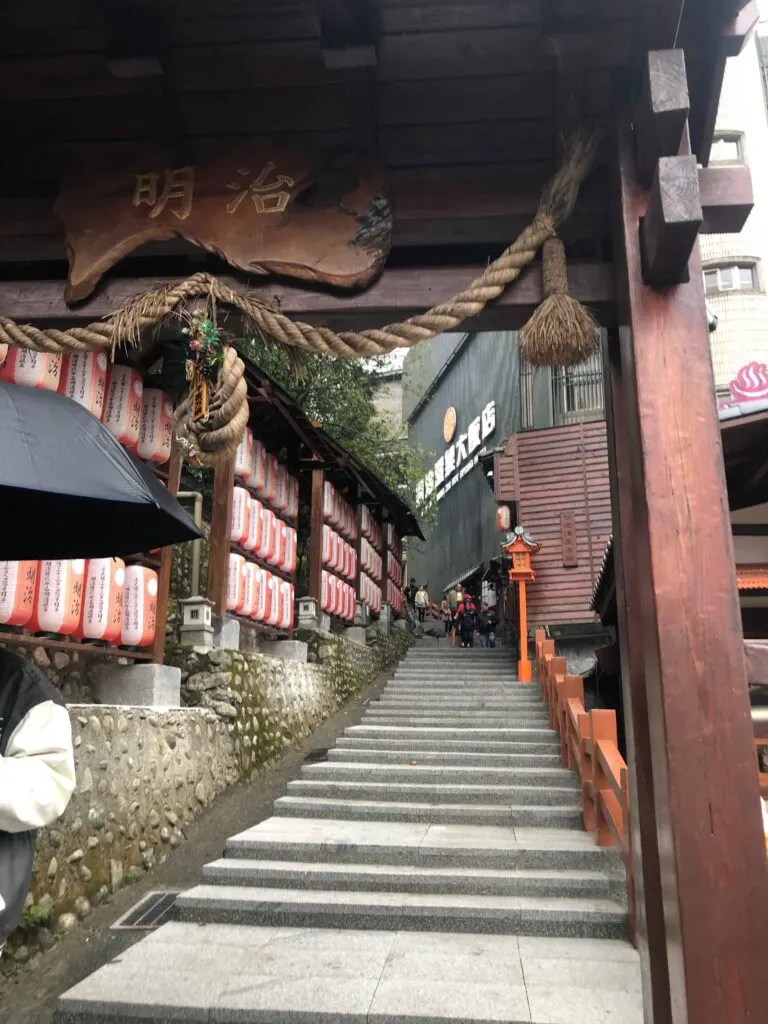
Mingzhi (Meiji) Wenquan Old Street:
It’s an alley street belonging to the long-established Guguan Meiji Hot Spring Hotel and a must-visit spot for taking memorable photos. The Japanese red lanterns and design make you feel like you’re in Japan, especially at night when the lantern glows. Although it’s a short stroll, make sure to ring the wishing bell three times to wish for safety, happiness and a blessed life.
(Credit: HungYu Chi)
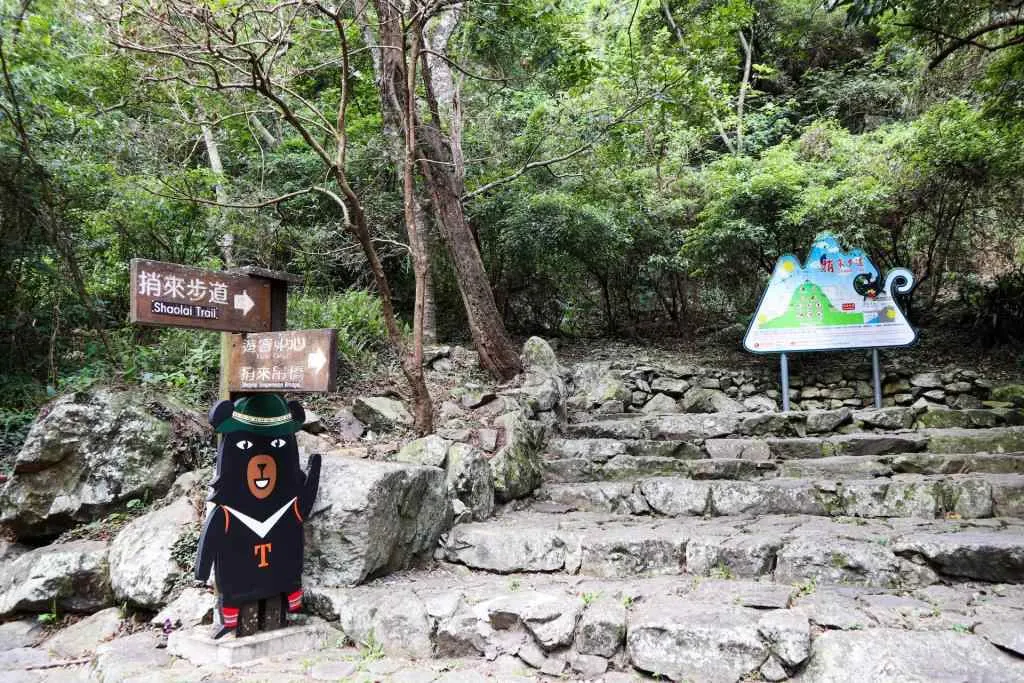
Shaolai Trail:
Named after a chief of a local indigenous tribe “Shaolai”, it’s a 1.5 km, one-hour hiking trail that is full of stairs which has a few steep paths, but will eventually lead you to the viewing deck at the top. Along the way, you’ll be able to take a glance at the grand Dajia River below you as you walk across the Shaolai Suspension Bridge. Unfortunately this bridge is currently temporarily closed for reconstruction, please enter the trail from the East Entrance (near Four Seasons Hotel) for now. It’s a more challenging trail by entering the east entrance because of the steep parts, but the lush natural scenery is worth a climb before soaking in the hot spring.
(Source: Tourism Bureau, M.O.T.C. Official Website)
5. Guanziling Hot Springs (Tainan)
If you’re up for an unique mud hot spring experience in southern Taiwan, Guanziling is your only choice! Mud hot springs are formed as the spring water that rises through the mudstone layer. It carries a large amount of mud and creates a mud-like spring.
Not only could you soak in the muddy warmth, you could also make your skin good by rubbing it on your face or body as the mineral-rich mud serves as a natural cosmetic. Besides this rare hot spring, the nearby attractions like Water Fire Cave, Huoshan Biyun Temple, and Old Street are worth a visit on the trip.
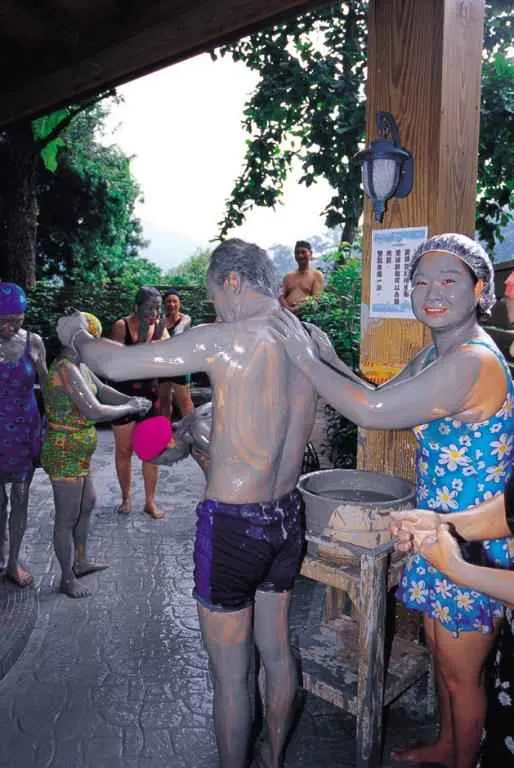
Travel tip: Getting to Guanziling is much more convenient by car than public transportation since it’s quite a distance from Tainan city center and actually closer to Chiayi city.
But you can still get there with an hour-long bus ride from Chiayi High Speed Rail station. Because it’s far from the city, it’s better to stay for a night in the hot springs hotels to have more time to relax and take in the mountainous sceneries of Tainan.
Must-visit nearby attractions
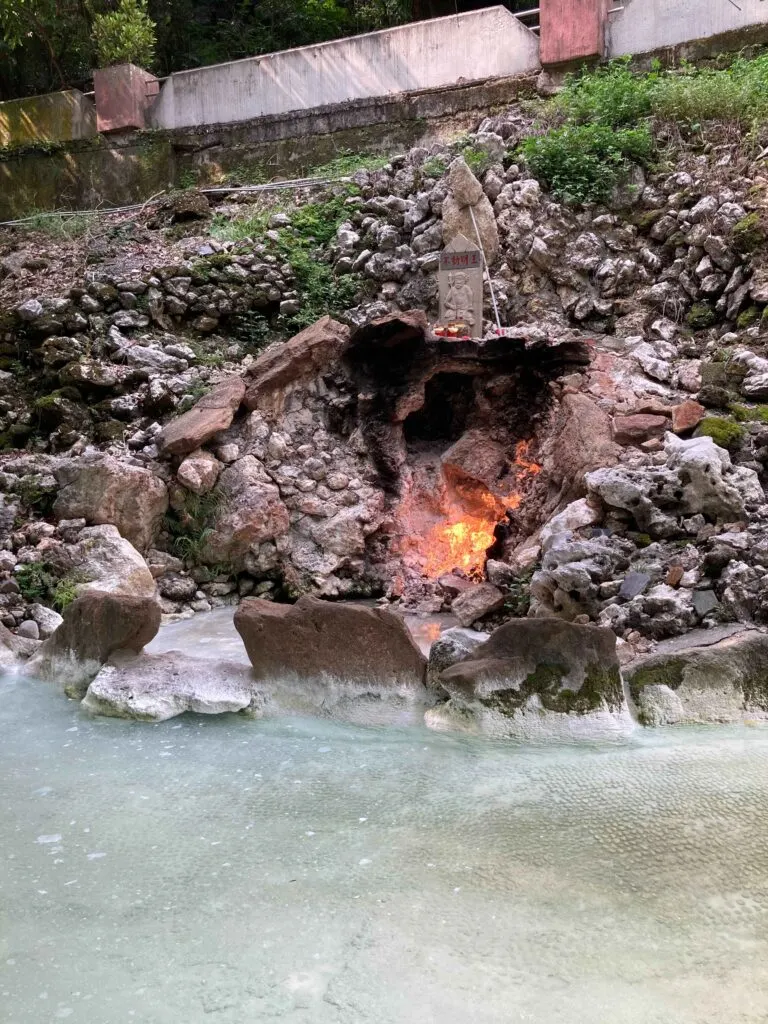
Water Fire Cave (水火同源):
Ever seen fire and water within each other? This rare natural wonder is a must-visit attraction for locals. The flame, believed to have been burning for 300 years, was created after an earthquake that led to methane gas seeping from the cliff while spring water flowed through the rocks.
It’s not exactly a cave nor a big spectacle, but still a unique phenomenon. I recommend you to enjoy the street food from the stalls nearby to make the visit more delightful.
(Credit: Ann)
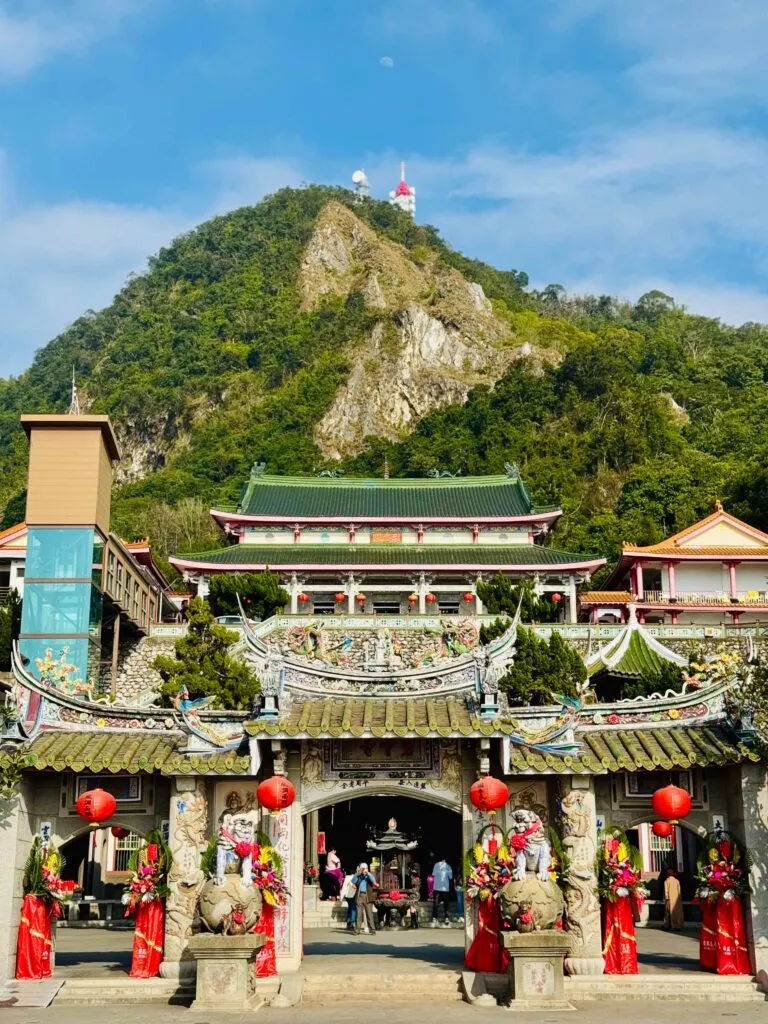
Huoshan Biyun Temple (火山碧雲寺):
With history over 200 years, this is an old buddhist temple that has a fusion of Minnan and Japanese architectural elements. Hiking up here from Water Fire Cave is worth it for a great view over the plains. Bilingual information are provided in this temple for you to know more about the history of this temple.
(Credit: Shawn)
6. Sichongxi (Pingtung County)
If you’re escaping the coldness of northern Taiwan, head south to Sichongxi. It is ranked alongside Beitou, Yangmingshan, and Guanziling as one of the four major hot spring spots in Taiwan during the Japanese colonial era. During the Japanese colonial era, the emperor’s brother and his wife visited here for their honeymoon, where the bathtub they used is still preserved in the Qingquan Japanese Hot Spring Hotel. After the Republic of China took over Taiwan, Chiang Kai-shek president also visited here, making it a prosperous spot in the past.
Recent years, Sichongxi has revived its glory by organizing a hot spring festival annually. Every November to March, Sichongxi Hot Spring Park will hold the Pingtung Sichongxi Hot Spring Festival, which includes cool lights decoration, hot spring farmers’ fair, marathon, and other fun things to try like renting a kimono. I highly recommend you to check their website for relevant events if you’re coming around this time of the year.
Must-visit nearby attractions
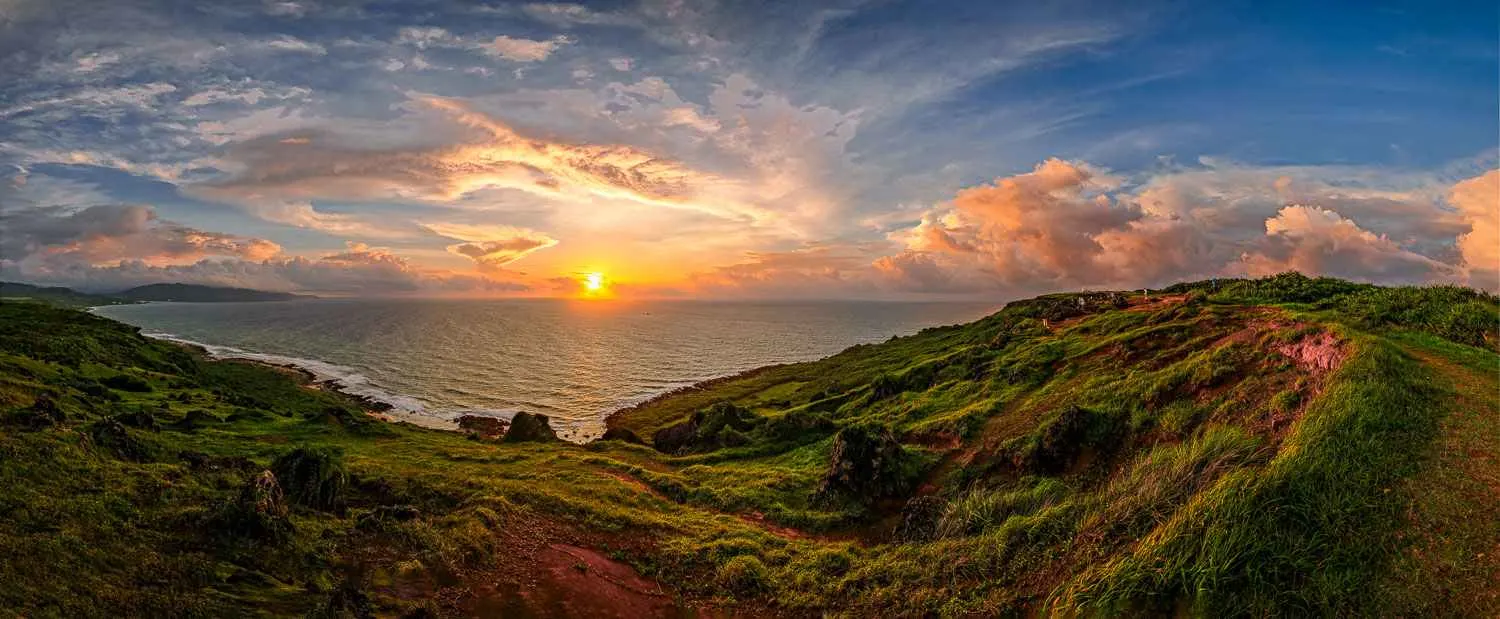
Kenting National Forest Recreation Area:
Winter can get very windy in Pingtung, but a hike in this national park is a nice way to get warmed up. What’s striking about this park is the geological foundation which is full of ancient coral rocks and caves that were the remnants when this area was in the sea 500 thousand years ago. You might even spot Formosan Sika Deer, a beautiful species successfully conserved through captive breeding efforts in this area.
(Source: Tourism Bureau, M.O.T.C. Official Website)

Shimen Ancient Battlefield:
Another hiking trail, but this one is situated at an important historic site where the Paiwan indigenous tribes fought against Japanese army at the year of 1874 during the Mudan Incident. It’s a nice place to stop by and take in the history. The hiking trail takes about an hour that leads you to see a vast view of ocean from the mountain.
(Source: Tourism Bureau, M.O.T.C. Official Website)
Hot Spring Reminders in Taiwan
- What to wear depends on the hot spring hotel/bathhouses you visit: Public bathhouses usually requires swimsuits and caps. But there’s also nude pools for gender-segregated pools. So please check with the facility you’re choosing.
- Tattoos are welcomed: Unlike in Japan, Taiwan’s hot spring etiquette doesn’t restrict visitors with tattoos.
- Take breaks and hydrate: Soak for around 10-15 minutes, and and be sure to take at least a five-minute break in between to support blood circulation. Keep your total soaking time under an hour for the best experience. Hot springs metabolizes your body, so make sure to drink water to avoid being dizzy from dehydration.
- Shower before entering: It’s an etiquette to shower before entering hot spring. I recommend you to scoop some water and pour it over your body to adjust to the temperature. Then, immerse your body gradually.
- Avoid drinking alcohol: A drink seems like a relaxing way to accompany the hot spring experience, but alcohol can lead to increased heart rate and faster blood circulation. When combined with hot spring, it’ll put extra strain to your heart, increasing the risk of dizziness or stroke.
- Avoid being hungry or too full: Avoid being in hot spring right after eating. Also, being hungry with low blood pressure can lead to dizziness during soaking.
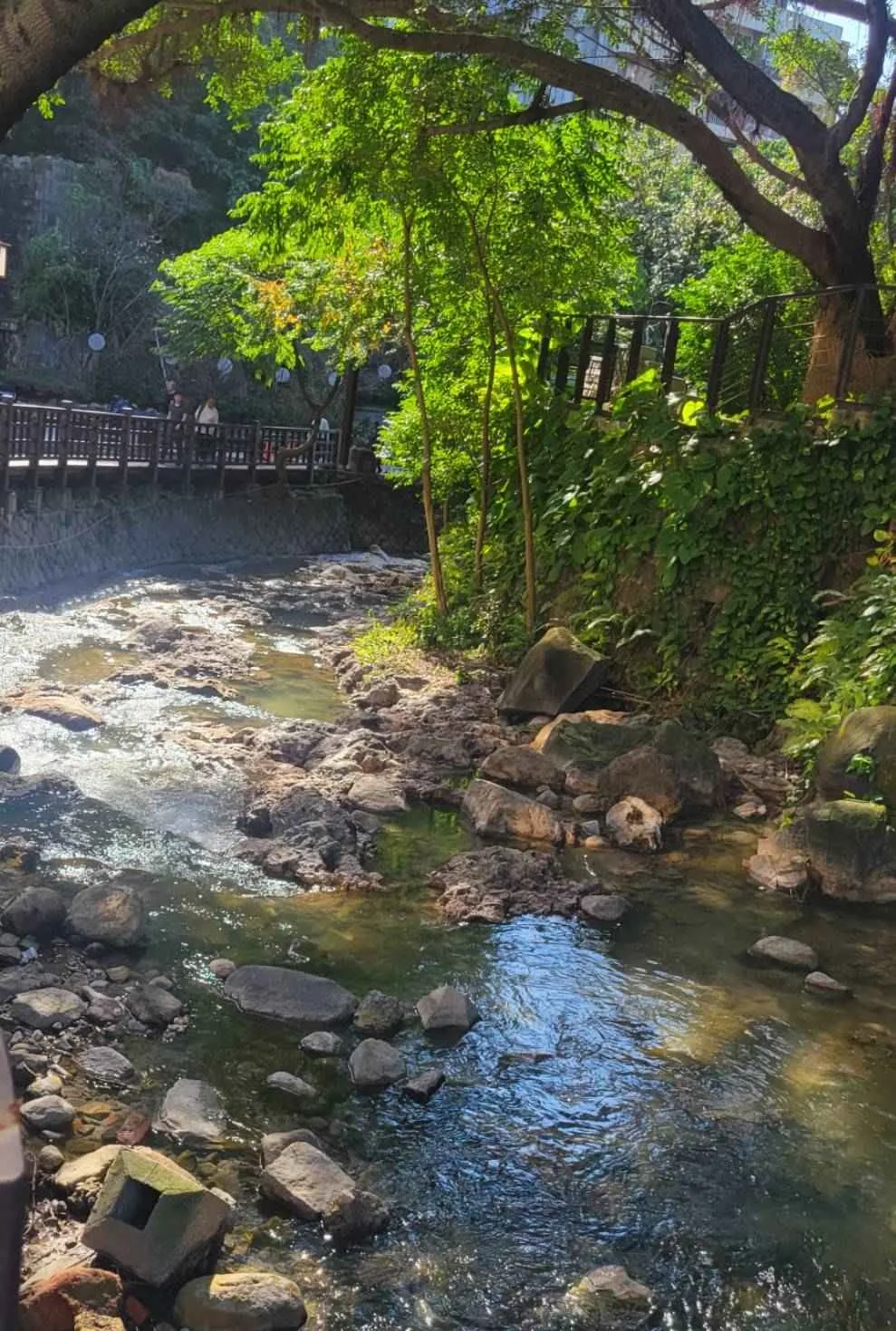
As you can see, the best hot spring destinations aren’t just about hot springs, it’s more about the combination of how much you could explore the nearby nature, history, culture and food!
To fully enjoy the experience, I suggest planning a two-day, one-night trip to have more time to wander around the hot spring areas for the relaxed pace. After all, isn’t this what hot spring trips are all about?